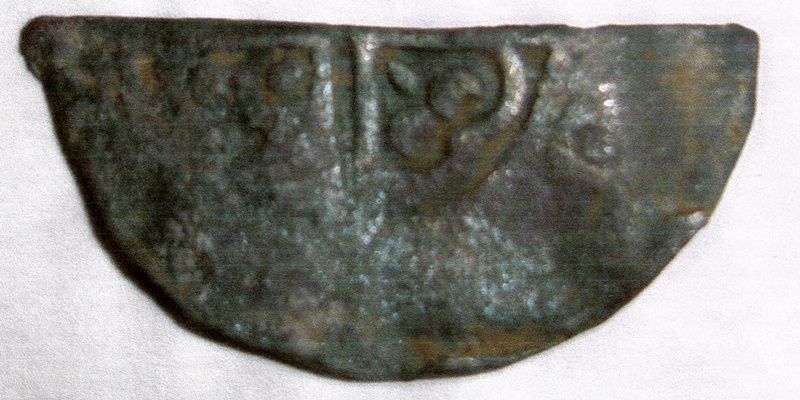A Fife treasure hunter has made what he believes to be the most important Scottish coin find ever.
Metal detector hobbyist Jim Crombie made the startling discovery on the banks of Loch Leven, a spot popular with monks in centuries past.
Mr Crombie (69), from Lochgelly, believes the tiny half coin was issued in King Stephen’s name by King David I of Scotland.
Controversially, he also thinks that it may have been minted in Newcastle at a time when the city was under Scottish rule.
The silver fragment is now being assessed by the National Museums of Scotland’s Treasure Trove unit.
However, Mr Crombie maintains it is the only example of a Newcastle-minted coin in a Scottish museum and fills a gap in the country’s coin history, or numismatology.
Former forces man Mr Crombie said: ”My coin find is likely to be the first coin issue ever made by a Scottish monarch. It was issued by a Scottish monarch while he was occupying the north of England.
”No Scottish museum has an example of my coin on display and they don’t mention its existence either.
”The National Museums of Scotland have coin examples from all the other mints (and) have examples of each issue on display.
”They don’t have an example of this particular issue to put on display.”
He added: ”I found this coin in Kinross-shire, the only one ever to be found on Scottish soil.
”It is credited as being issued by a Scottish monarch by several respected numismatists and, as a result, is possibly the first ever coin issued in the name of Scotland.
”It is an excessively rare coin and a coin that is clearly historically very important to our nation.”
The United Kingdom Finds Database has described the two-centimetre half-coin as: ”A cut halfpenny of Stephen, struck in the Scottish Border area, probably at Newcastle.
”The coin is a variant of the ‘Watford’ type, with a long cross voided superimposed on the short cross moline of the reverse.”
Its minting has been dated as between 1135 and 1154.
Mr Crombie, a keen metal detector user who has turned up dozens of interesting finds in Kinross-shire, is keeping the exact location of his latest discovery a closely-guarded secret.
However, he did reveal his opinion that Augustinian monks operating around the Loch Leven area may have been responsible for discarding or dropping the coin.
He said most of his finds are donated to museums for their collections with many in Kinross and Perth but he has yet to decide what to do with this one.
”I’ve been doing this for eight or nine years and built up a good picture,” he said. ”I certainly don’t do it for the money because I just hand over most things I find.
”I got the metal detector when I retired because my wife said it might be something I would enjoy, and that’s certainly been the case.
”I’ve been looking in this area for quite a while and even found a Bronze Age flat axe in January.
”The more you find, the more you want to find, and the more knowledgeable you become when you get information back.”
A spokesman for the National Museums of Scotland said the coin is still being examined by experts.An area steeped in archaeologyThe coin is far from the first historically significant find made in the area in recent times.
Tayside and Fife have been heavily populated since early Pictish times and evidence of ancient populations are regularly turned up.
Archaeologists are set to return to St Serf’s Island on Loch Leven this summer after uncovering evidence of an ancient monastery there during a probe last year.
Much of eastern Scottish civilisation was centred on the loch, with its easy access to St Andrews and Scotlandwell.
Another prehistoric powerbase was in Strathearn, south of Perth, at Forteviot, where pallisades and graveyards have been found and excavated.
One of the most spectacular recent discoveries dates from much earlier the 3,000-year-old Carpow log boat, which is now in Perth Museum.
It was pulled from the mudbeds of the River Tay near Newburgh and restored in an extensive project which has only recently reached its fruition.
And work is ongoing in and around Loch Tay, where underwater archaeologists are continually finding new evidence of the Iron Age denizens of Highland Perthshire.
Speculation has always been rife that the Strathmore border between Angus and Perthshire is tied into Arthurian legend, with Guinevere’s grave supposedly somewhere in the region.
Burial sites have been turned up as recently as April another barrow was found near Meigle but the elusive treasure trove of King Arthur’s paramour has not been revealed.
